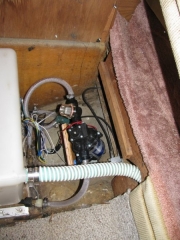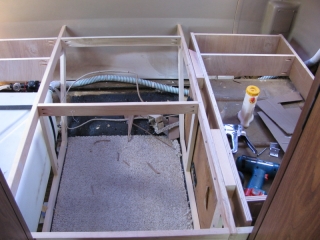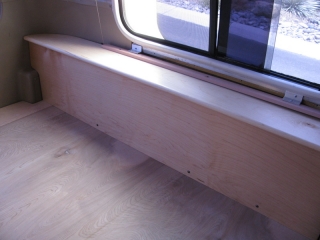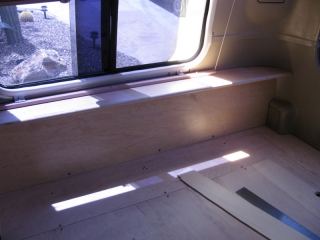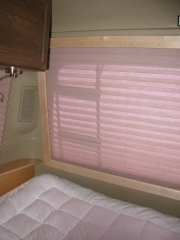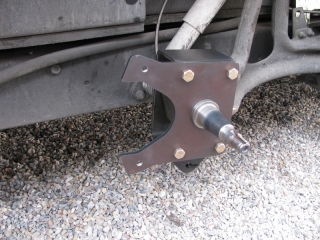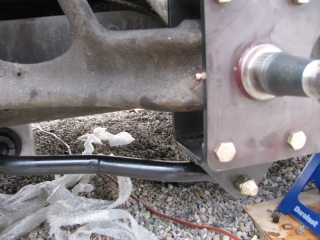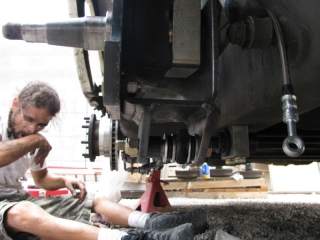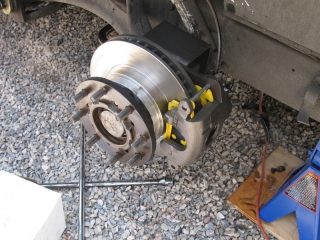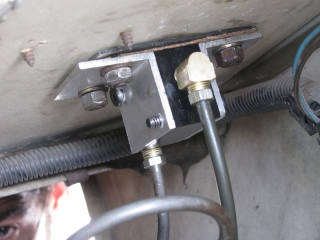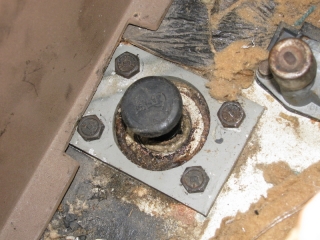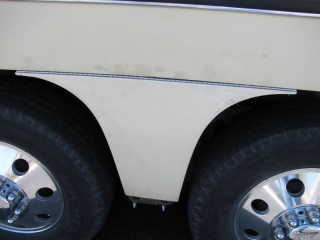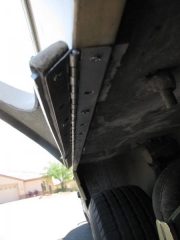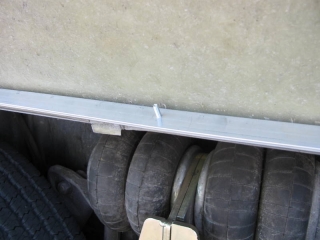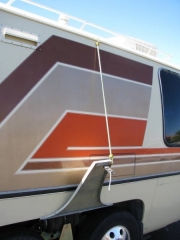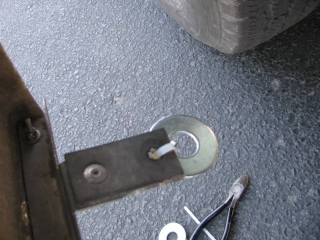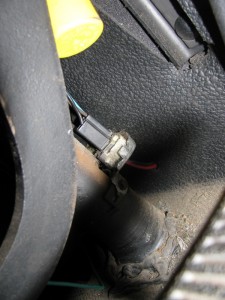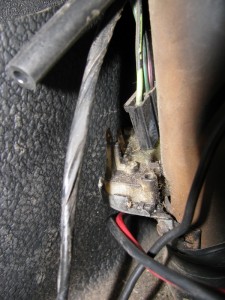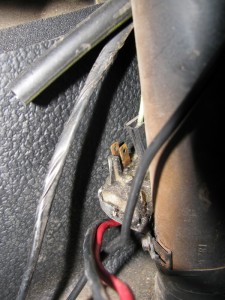Purpose of this post: to resolve some GMC engine cooling issues
The Engine Cooling Issues I am addressing
● At high ambient air temperatures the fan clutch engages at highway speeds (50+ MPH) and causes lots of noise and negatively affects fuel mileage.
● The fan clutch wears out faster than it should. The failure seems to be the fan clutch gets “stuck on” and problem manifests itself in “engine” noise and reduced gas mileage. The alternative failure would be where the fan clutch gets “stuck off” resulting in loss of cooling in traffic and idle conditions when it is actually needed.
● The OEM radiator is thought to be inadequate to cool the engine and the inadequacy can be overcome with a new state-of-the-art aluminum radiator.
My Theory
Lots of theories about what is different about the GMC and why cooling and fan clutches are such an issue – my theory is that air flow around the radiator rather than through it is the cause of all of the fan clutch and overheating problems. It causes fan clutches to fail prematurely and it causes a very large OEM radiator to be inadequate in capacity.
I think that what is happening is that the air entering the front of the vehicle is flowing around the radiator and to the firewall where it swirls back toward the front of the vehicle. Along the way back to the front it passes over the very hot exhaust. manifold or header and carries that heat to the front of the engine where the fan clutch can sense it and engages until it senses the air has cooled. This happens at highway speeds.
The reason the radiator is inadequate is because the bulk of the air entering the front of the vehicle is seeking the path of least resistance and going around it. Very little cool air is getting through the radiator.
The reason the fan clutches are failing is because they are not designed for constant high-RPM use at high temperatures. Fan clutches are designed to be used when the vehicle is idling or being driven at low speeds in traffic – not highway speeds. The reason some fan clutches cycle on and off and others don’t is because of our perception more than actual fact. The AC Delco, for example, …………. The Hayden 2797 ………..
My “Experiment”
My “experiment” was conducted during an 8-week 7400 mile road trip we took last summer in our GMC motorhome. We left on the trip at the height of the summer in Tucson – daily high temperatures near 110 degrees – and drove to the East coast at Maryland, went North to Maine and Quebec City, West to Michigan, South to Memphis, and then back to the Tucson area by the end of September. Lots of different weather conditions.
Setting up the “experiment”
The first step of the experiment was to calibrate and install a mechanical engine temperature gauge. I calibrated it on the stove with boiling water and it matched the exact temperature for the current atmospheric pressure and my altitude so I would know that engine temperature readings would be accurate.
The next step was to install a new aluminum radiator and AC Delco 15-4644 heavy duty fan clutch.
The next step was to install a bad – stuck open – thermostat in the engine so that I could tell how well the radiator was cooling and exactly how much cooling the engine needed at any given point. Actually, the thermostat failed within a couple of days after beginning the trip and I left it as it was. My thinking was that it would only affect the heater and would have no negative impact on the engine. Some people think that the mileage would be measureably affected but I say, with lots of data since then, that mileage was not affected at all.
The final step was to validate that I could hear whether or not the fan was engaged – i.e. it was running at engine speed. The AC Delco is a heavy duty clutch which apparently means that it has the guts to turn the fan at engine speed when it is at relatively high RPMs. My hearing is good enough for that so the experiment is ready.
Gathering data
Data was gathered throughout the trip but, unfortunately not recorded in any scientific way. I will have to rely on the web log I kept during the trip and my memory but it is not necessary to be too exact I think – read further and see what you think.
The first part of the trip was made during extremely hot days beginning on August first and second when we drove through Eastern Arizona, New Mexico, Texas and Oklahoma on the way to Kansas City. The radiator and fan clutch combination had no problem keeping the engine cool but the fan clutch was engaged much of the time at highway speeds. At that point in time the thermostat was working and the temperature gauge showed the engine cooling down to about 195 degrees while the fan was turning and when the fan stopped after another 30 seconds or so the engine temperature would climb to about 210 degrees. At 90 degrees ambient temperature the fan was engaged about 70 percent of the time. I measured that using a stop watch on my cell phone. At 105 degrees ambient temperature the fan was on virtually 100 percent of the time. The reason that I was concerned was that the noise was deafening and Carol was threatening to ask me to turn around and go home unless I could fix it.
During these two days I tried to improve the air flow through the radiator and the engine compartment by removing the passenger side wheel well liner (put it into the back of our Tracker tow car). There was no measureable effect. The fan was on as much as it had been before. Side note: my coach had the exhaust vents above the wheel wells already.
When we got to Kansas City I swapped in a Hayden 2797 fan clutch that had been installed before the AC Delco. This one worked and was much quieter than the AC Delco – it seemed that while it was engaged as much as the AC Delco was it didn’t run at full engine speed so it was quieter. Another effect of using the Hayden fan clutch was that the engine temperature stabilized rather than oscillating from 195 to 210 degrees. Just an observation that has nothing to do with solving the problem of why the fan needs to be on at highway speeds in the first place.
Somewhere along the line in the next few days the thermostat broke – stuck open – so now I would have more data on what was causing the fan clutch to engage. The strange thing is that now I could see (hear) that the fan clutch was coming on when it would seem to be unneeded. First thing in the morning the engine was cool and the ambient air was in the low 70’s. The fan clutch would be engaged when the engine was first started as expected and then would turn off as soon as it (the clutch) warmed up. The puzzling thing was that long before the engine was warmed up and while the ambient air temperature was still in the low 70’s the clutch would engage again. This is when the engine temperature was less than 150 degrees – sometimes much less and we were driving at highway speeds. Many times over the following weeks the engine temperature would be so low that I would worry about harm to the engine and the fan clutch would engage.
My initial thinking was that something was making that bimetallic spiral in front of the fan clutch hot and I tried to imagine ways of actually measuring the temperature there but could not. I figured it must be that the air coming through the radiator was being heated somehow and it may possibly have something to do with the engine or transmission oil coolers. I have spent many months thinking about this – seems obvious to me now – and just today realized that the only thing that could make the air hot enough to make the fan clutch turn on at highway speeds is the exhaust system – the manifolds or headers.
My Solution
Unable to solve “the riddle of the phantom heat generator” I ignored the need for understanding the problem and worked on eliminating it. During the winter I constructed some air dam structures from 18-wheeler mud flap material and hardware that prevent air from going around the sides of the radiator above the bumper and a spoiler that is installed at a 45 degree angle along the bottom-front width of the radiator. The spoiler, from what I have been told, deflects air upward into the radiator that would otherwise go underneath it and it also causes a vacuum behind itself that helps to pull air through the radiator and probably out the bottom of the engine compartment. Take a look at the photos below.
I didn’t know how air flow control could fix the problem but I modified it anyway. The modification has apparently worked and I now have no fan noise at highway speeds except during the 30 seconds to a minute or so needed to cool down when getting back up to speed after traffic stops. I am using a medium duty fan clutch (an Autozone Torqflo 922747) and so far – it got up to 94 degrees today – there has been no fan engagement at highway speed (that I can hear) and there is little or no fan noise in traffic. This is the way it is supposed to be.
The summer is coming and I am thinking that I may reinstall the AC Delco fan clutch and try it with the new air flow scheme – back when that happens.
Update 7/19/2012 I never did go back and install the AC Delco heavy duty fan clutch – I sold it instead. The Autozone Torqflo has been in there for two years and thousands (6 or 7 minimum) of miles in very hot (110 degrees for hours while climbing) conditions and it is still doing fine so I saw no point in that experiment. I am still carrying a Hayden 2797 as a spare but have no intention of using it unless the medium duty fails.
 Share on Facebook
Share on Facebook

